
Telephone poles, scaffoldings, abandoned utility plants: like taxpayer-sponsored dark matter, these elements form the largely ignored visual majority of our daily urban experience. K O S M O S, a self-described "virtual firm," whose four partners occasionally physically convene in New York, Basel, or Moscow, has spotlighted and transformed these otherwise drab infrastructural elements into a ribbed foil pop-up in Moscow entitled EMA. Described as "a temporary installation and renovation of ex-industrial territory in Moscow," EMA essentially repurposes an abandoned eyesore into an event space. We emailed Leonid Slonimskiy a few questions about K O S M O S' global approach to revitalizing forgotten infrastructural elements, as well as the selfie-savvy aesthetics and corresponding media-blurring issues of EMA's design.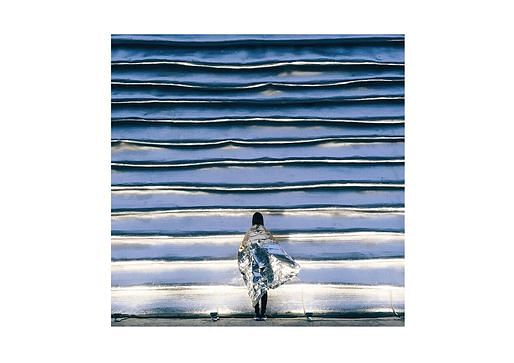

Archinect: You describe EMA as "reveal[ing] and leverag[ing] the hidden infrastructure of the city." In what other cities would you like to attempt similar infrastructural leveraging? Is there a particular type of infrastructure (wiring, power plants, etc.) that excites you in terms of its design possibilities? Is there a type of infrastructure you'd like to avoid?
Leonid: K O S M O S refers to infrastructural and so-called "anonymous" architecture in other projects and cities as well. In New York we used the typology of iconic Manhattan billboards and transformed them into communal public spaces - vertical gardens, vertical gyms, etc. In Moscow Triumphalnaya Square competition we were inspired by the cableworks and electrical wires and created a wall-less space with a functionally dense "suspended ceiling". In EMA Space and Garage pavilion we used utilitarian materials, used in the infrastructure of the city as well. Standard insulation foil and construction-protection net for scaffoldings were used in a non-conventional way, as facade surfaces.

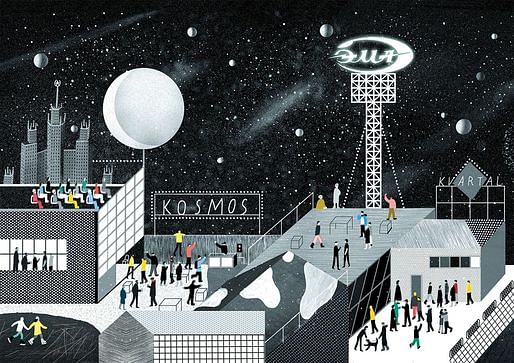
We aren't either attached or avoiding any type of inspiration, no matter if it comes from infrastructure of the city architecture or from somewhere else. We believe that architecture should be contextual - historically and locally. Our projects in megapolises take their inspiration from the city, its chaos and infrastructure, whereas our projects in a French village or a small Danish town are taking their inspiration from traditional construction techniques (wooden barrel construction, fachwerk).
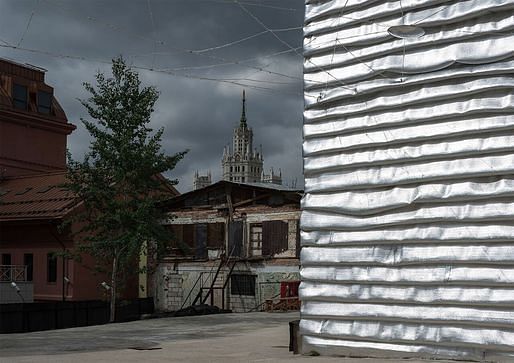
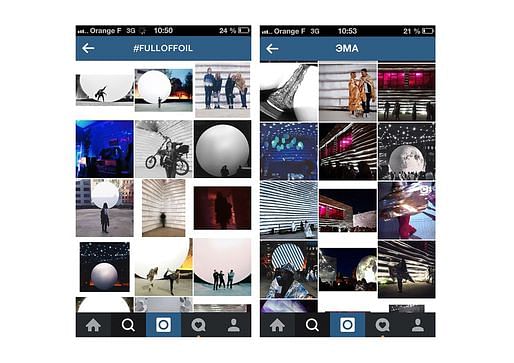
Archinect: Social media was obviously an important part of the project's launch. How much of the design was influenced by the desire to see photos of it on Instagram? How much of your design process is influenced by the presence of social media?
Leonid: EMA is a pop-up space: in several months it will disappear, so it was important to make it iconic, and particularly in social media, to promote and attract many people. In a way, each post, each selfie can be considered as a bit coin of cryptocurrency. There was no desire "to see it on Instagram", it was just used as a tool to extend architecture into digital world. When the pictures of EMA flooded the feeds of social networks, project started to develop there in parallel, promoting itself throgh digital imagery. We worked with social media in previous projects too: K O S M O S partner from New York, Nikolay Martynov has recently won the 1st prize and completed an installation for Storefront for Art and Architecture and New Museum, the idea of which was to work with social media. Speaking about how the design is influenced by social media, I would say that we are constantly thinking of how the physical space extents into digital and what is the future of architecture in that sense. Can architecture be experienced only personally, by touching the walls and walking the stairs, or is it nowadays merging with other medias? 

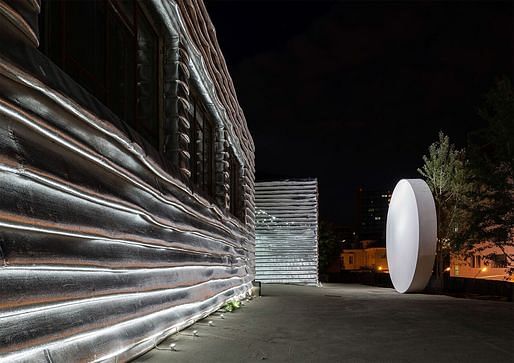
3 Comments
No
When I read Fred's illuminating comment, this quote comes to mind.
"It's like I'm reading a book... and it's a book I deeply love. But I'm reading it slowly now. So the words are really far apart and the spaces between the words are almost infinite [and the spaces between letters] - me. I can still feel you... and the words of our story... but it's in this endless space between the words that I'm finding myself now. It's a place that's not of the physical world. It's where everything else is that I didn't even know existed. I love you so much. But this is where I am now. And this is who I am now. And I need you to let me go. As much as I want to, I can't live in your book any more."
So, summing up Fred's point, and there is one, if you separate the 'N' from the 'O' in order to give a graphic representation to the infinity between letters, you'll find that, yes, [A]rchitecture is merging with media; it's just that it depends on how you define architecture, and media.
"EMA is a pop-up space: in several months it will disappear, so it was important to make it iconic, and particularly in social media, to promote and attract many people."
NO?
Block this user
Are you sure you want to block this user and hide all related comments throughout the site?
Archinect
This is your first comment on Archinect. Your comment will be visible once approved.